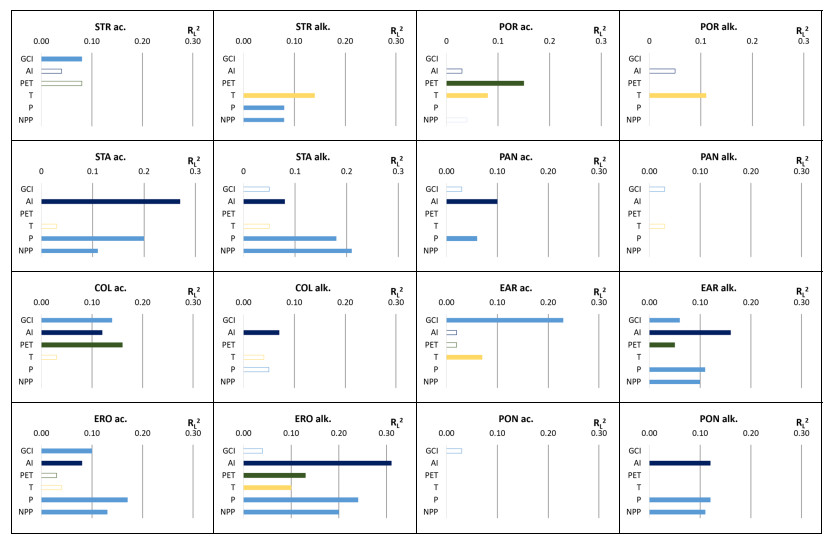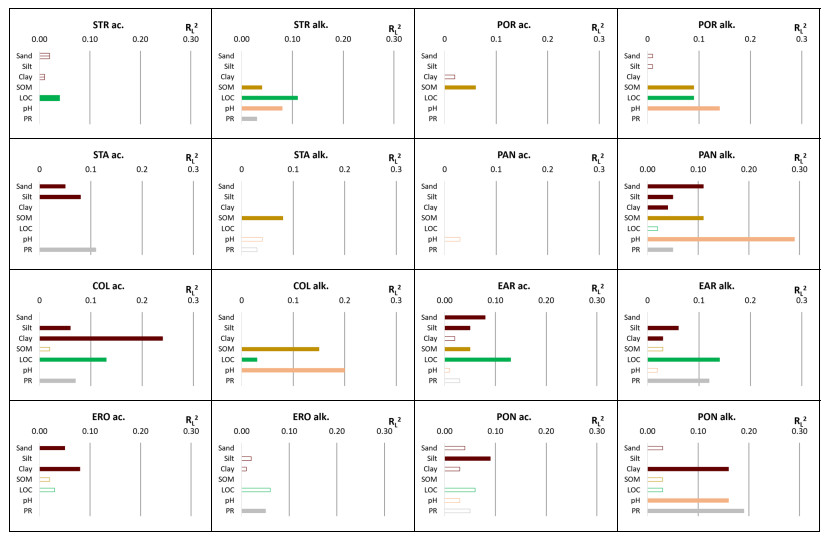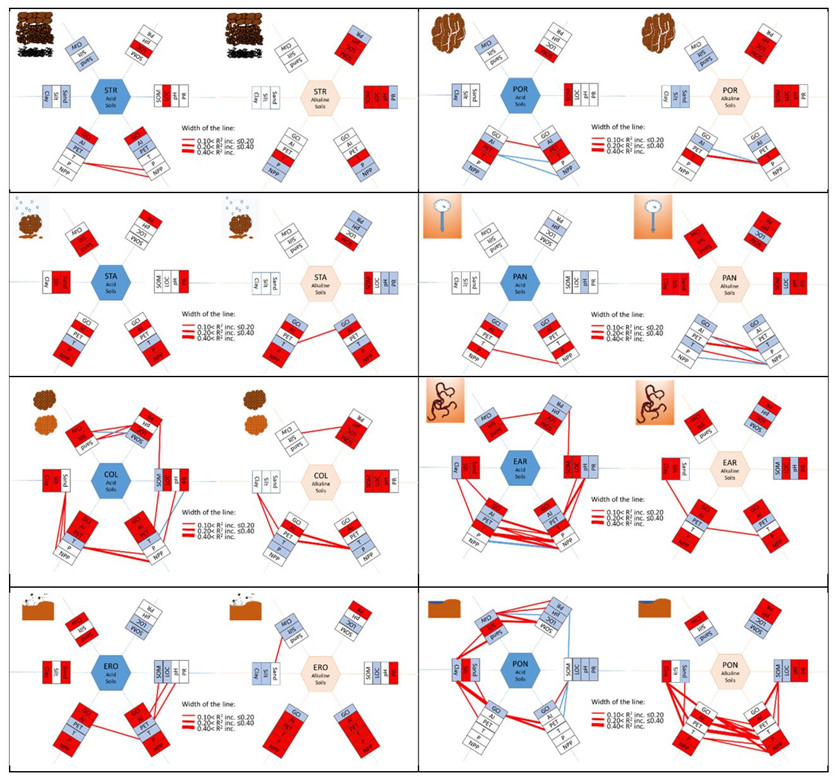1.
Introduction and preliminaries
Fractional calculus has emerged as one of the most important interdisciplinary subjects. In recent past it experienced rapid development and consequently several new generalizations of classical concepts of fractional calculus have been obtained in the literature, for example, see [9].
The classical Riemann-Liouville fractional integrals are defined as:
Definition 1.1 ([9]). Let F∈L1[a,b]. Then the Riemann-Liouville integrals Jαa+F and Jαb−F of order α>0 with a≥0 are defined by
and
where
is the well known Gamma function.
Diaz et al. [8] introduced the notion of generalized k-gamma function. The integral form of Γk is given by:
Note that
k-Beta function is defined as:
Obviously
Sarikaya et al. [18] extended the notion of Riemann-Liouville fractional integrals to k-Riemann-Liouville fractional integrals and discussed some of its interesting properties.
To be more precise let F be piecewise continuous on I∗=(0,∞) and integrable on any finite subinterval of I=[0,∞]. Then for v>0, we consider k-Riemann-Liouville fractional integral of F of order α
It has been observed that k-fractional integrals are significant generalizations of classical fractional integrals. For more details, see [18].
Ahmad et al. [1] defined fractional integral operators with an exponential kernel and obtained corresponding inequalities.
Definition 1.2. Let F∈[a,b]. The fractional left side integral kIαa+F and right side integral kIαb−F of order α∈(0,1) are defined as follows:
and
Using the ideas of [1,18], we now introduce the notion of k-fractional integral operators with an exponential kernel.
Definition 1.3. Let F∈L[a,b]. The k-fractional left side integral kIαa+F and right side integral kIαb−F of order α∈(0,1) for k>0 are defined as follows
and
It is to be noted that by taking k→1 in Definition 1.3, we recapture Definition 1.2. Fractional analogues of integral inequalities have a great many applications in numerical quadrature, transform theory, probability, statistical problems etc. Therefore, a significant and rapid development in this field has been noticed, for details, see [2,3,20,24,25]. Sarikaya et al. [19] utilized the concepts of fractional integrals and obtained new fractional refinements of trapezium like inequalities. This article motivated many researchers and as a result several new fractional extensions of classical inequalities have been obtained in the literature, for example, see [1,4,6,7,11,14,15,16,17,18,19,22,23]. Recently Ahmad et al. [1] used fractional integral operators with an exponential kernel and obtained corresponding inequalities. Wu et al. [23] derived some new identities and bounds pertaining to fractional integrals with the exponential kernel.
The main motivation of this paper is to derive some new fractional refinements of trapezium like inequalities essentially using the new fractional integral operators with an exponential kernel to k-fractional integral operators with an exponential kernel and the preinvexity property of the functions. In order to establish the significance of our main results, we offer some applications of our main results to means and q-digamma functions. We hope that the ideas and techniques of this paper will inspire interested readers working in the field of inequalities.
Before we proceed further, we now recall some previously known concepts from convex analysis. We first, start with the definition of invex sets.
Definition 1.4 ([10]). A set K is said to be invex with respect to bifunction θ(.,.), if
The preinvexity of the functions is defined as:
Definition 1.5 ([21]). A function F:K→R is said to be preinvex with respect to bifunction θ(.,.), if
In order to obtain some of the main results of the paper, we need the famous condition C, which was introduced by Mohan and Neogy [13]. This condition played a vital role in the development of several results involving preinvex functions.
Condition C. Let θ:K×K→Rn. We say that the bifunction θ(.,.) satisfies the condition C, if for any x,y∈Rn
1. θ(x,x+vθ(y,x))=−vθ(y,x),
2. θ(y,x+vθ(y,x))=(1−v)θ(y,x),
for all v∈[0,1].
Note that for any x,y∈Rn and v1,v2∈[0,1] and from the condition C, we have, see [12]
2.
Trapezium type inequalities
In this section, we derive some new fractional trapezium type inequalities involving the functions having preinvexity property. For the sake of simplicity, we set ρ=k−ααθ(b,a) and ρ1=1−ααθ(b,a).
Theorem 2.1. Let F:[a,a+θ(b,a)]⊆R→R be a positive function with θ(b,a)>0 and F∈L[a,a+θ(b,a)]. Suppose F is a preinvex function and θ(.,.) satisfies condition C, then
Proof. By preinvexity of F, we have for every x,y∈[a,a+θ(b,a)] with λ=12
with x=a+vθ(b,a),y=a+(1−v)θ(b,a) and using the condition C, we have
Multiplying both sides of above inequality by e−ρv and integrating with respect to v over [0,1], we have
As a result, we get
For the proof of second inequality, we note that F is a preinvex function, so we have
Multiplying both sides by e−ρv and integrating with respect to v over [0,1], we have
Combining (2.3) and (2.5) completes the proof.
Theorem 2.2. Let F:[a,a+θ(b,a)]⊆R→R be a positive and preinvex function with θ(b,a)>0 and F∈L[a,a+θ(b,a)]. Let W be a non-negative, integrable and symmetric with respect to 2a+θ(b,a)2, then using the condition C, we have
Proof. Since F is preinvex function on L[a,a+θ(b,a)], so multiplying inequality (2.2) by
and then integrating with respect to v over [0,1], we get
Thus
Since W is symmetric with respect to 2a+θ(b,a)2, we have
Thus we get the left side of inequality (2.6).
For the proof of right side of inequality (2.6), we multiply (2.7) and (2.4) and then integrating the resulting inequality with respect to v over [0,1], we get the required result.
Theorem 2.3. Let F,W:[a,a+θ(b,a)]⊆R→R be nonnegative and preinvex function on L[a,a+θ(b,a)] with θ(b,a)>0. If θ(.,.) satisfies condition C, then the following inequalities for the k-fractional integrals with exponential kernel holds:
and
where
and
Proof. Since F,W are preinvex functions on [a,a+θ(b,a)], then we have
and
Adding above inequalities, we have
Multiplying both sides of above inequality by e−ρv and integrating with respect to v over [0,1], we have
So,
For the proof of inequality (2.9), using the preinvexity of F,W and condition C, we have
Multiplying both sides of inequality (2.10) by e−ρv and integrating with respect to v over [0,1], we get
which completes the proof.
3.
Inequalities involving first and second order differentiable preinvex functions
Lemma 3.1. Assume that F:[a,a+θ(b,a)]⊆R→R is a differentiable function and F′∈L[a,a+θ(b,a)]. Then the following equality for the k-fractional integrals with exponential kernel holds:
where
and
Proof. By simple calculations, we have
similarly
Also note that
Substituting (3.2), (3.3) and (3.4) in (3.1) completes the proof.
Theorem 3.1. Assume that F:[a,a+θ(b,a)]⊆R→R is a differentiable function and F′∈L[a,a+θ(b,a)] and |F′| is preinvex on [a,a+θ(b,a)]. Then the following inequality for the k-fractional integrals with exponential kernel holds:
Proof. Using Lemma 3.1, preinvexity of |F′| and increasing property of exponential function, we have
which completes the proof.
Lemma 3.2. Assume that F:[a,a+θ(b,a)]⊆R→R is a differentiable function and F′∈L[a,a+θ(b,a)]. Then the following equality for the fractional integrals with exponential kernel holds:
where
Proof. Using 3.2 and 3.3, we get the required result.
Theorem 3.2. Assume that F:[a,a+θ(b,a)]⊆R→R is a differentiable function and F′∈L[a,a+θ(b,a)]. If |F′| is preinvex function on [a,a+θ(b,a)], then the following inequality for the k-fractional integrals with exponential kernel holds:
Proof. Using Lemma 3.2, preinvexity of |F′| and increasing property of exponential function, we have
which completes the proof.
Lemma 3.3. Assume that F:[a,a+θ(b,a)]⊆R→R is twice differentiable function and F′′∈L[a,a+θ(b,a)]. Then the following equality for the k-fractional integrals with exponential kernel holds:
Proof. Using (3.5) and integration by parts, we have
similarly
Substituting (3.7) and (3.8) in (3.5), we have
which completes the proof.
Theorem 3.3. Assume that F:[a,a+θ(b,a)]⊆R→R is twice differentiable function. If F′′∈L[a,a+θ(b,a)] and |F′′| is preinvex on [a,a+θ(b,a)], then the following inequality for the k-fractional integrals with exponential kernel holds:
Proof. It is to be noted that
and
Using (3.6), (3.9), (3.10) and the preinvexity of |F′′|, we have
the proof is complete.
Lemma 3.4. Assume that F:[a,a+θ(b,a)]⊆R→R is twice differentiable function and F′′∈L[a,a+θ(b,a)]. Then the following equality for the k-fractional integrals with exponential kernel holds:
where
Proof. Using (3.1), we have
Thus
Substituting (3.7), (3.8) and (3.12) in (3.1), we get the required result.
Theorem 3.4. Assume that F:[a,a+θ(b,a)]⊆R→R is a twice differentiable function. If F′′∈L[a,a+θ(b,a)] and |F′′| is preinvex on [a,a+θ(b,a)], then the following inequality for the k-fractional integrals with exponential kernel holds:
Proof. Using (3.11) and preinvexity of |F′′|, we have
The proof is complete.
Remark 3.1. We would like to remark here that by taking k→1, new results can be obtained from our results.
Applications
We now discuss some applications of the results obtained in previous section. Before we proceed further let us recall the definition of arithmetic mean.
The arithmetic mean is defined as
Proposition 3.1. Suppose all the assumptions of Theorem 3.1 are satisfied, then
Proof. The proof directly follows from Theorem 3.1 by setting θ(b,a)=b−a,k=1 and F(x)=x2.
Proposition 3.2. Suppose all the assumptions of Theorem 3.2 are satisfied, then
Proof. The proof directly follows from Theorem 3.2 by setting θ(b,a)=b−a,k=1 and F(x)=x2.
Proposition 3.3. Suppose all the assumptions of Theorem 3.3 are satisfied, then
Proof. The proof directly follows from Theorem 3.3 by setting θ(b,a)=b−a,k=1 and F(x)=x2.
Proposition 3.4. Suppose all the assumptions of Theorem 3.4 are satisfied, then
Proof. The proof directly follows from Theorem 3.4 by setting θ(b,a)=b−a,k=1 and F(x)=x2. We now discuss applications to q-digamma functions, which is defined as:
Suppose 0<q<1, the q-digamma function χq(u) is given as
For q>1,t>0, then q-digamma function χq can be given as
From the above definition, it is clear that χ′q is completely monotone on (0,∞) for q>0. This implies that χ′q is convex. For more details, see [5].
Proposition 3.5. Under the assumption of Theorem 2.1, the following inequality holds:
Proof. The proof is direct consequence of Theorem 2.1, by choosing θ(b,a)=b−a,k=1 and F(v)→χq(v).
Proposition 3.6. Under the assumption of Theorem 3.1, the following inequality holds:
Proof. The proof is direct consequence of Theorem 3.1, by choosing θ(b,a)=b−a,k=1 and F(v)→χq(v).
Proposition 3.7. Under the assumption of Theorem 3.1, the following inequality holds:
Proof. The proof is direct consequence of Theorem 3.1, by choosing θ(b,a)=b−a,k=1 and F(v)→χq(v).
4.
Conclusions
In the article, we have extended the fractional integral operators with an exponential kernel to k-fractional integral operators with an exponential kernel and derived several new trapezium type integral inequalities involving the new fractional integral operator essentially using the functions having preinvexity property. We have also discussed some interesting applications of our obtained results, which show the significance of our main results. It is also worth mentioning here that our obtained results are the generalizations of some previously known results and our ideas may lead to a lot of follow-up research.
Acknowledgment
The authors are thankful to the editor and anonymous reviewers for their valuable comments and suggestions. This research was funded by Dirección de Investigación from Pontificia Universidad Católica del Ecuador in the research project entitled, "Some integrals inequalities and generalized convexity" (Algunas desigualdades integrales para funciones con algún tipo de convexidad generalizada y aplicaciones).


















 DownLoad:
DownLoad: